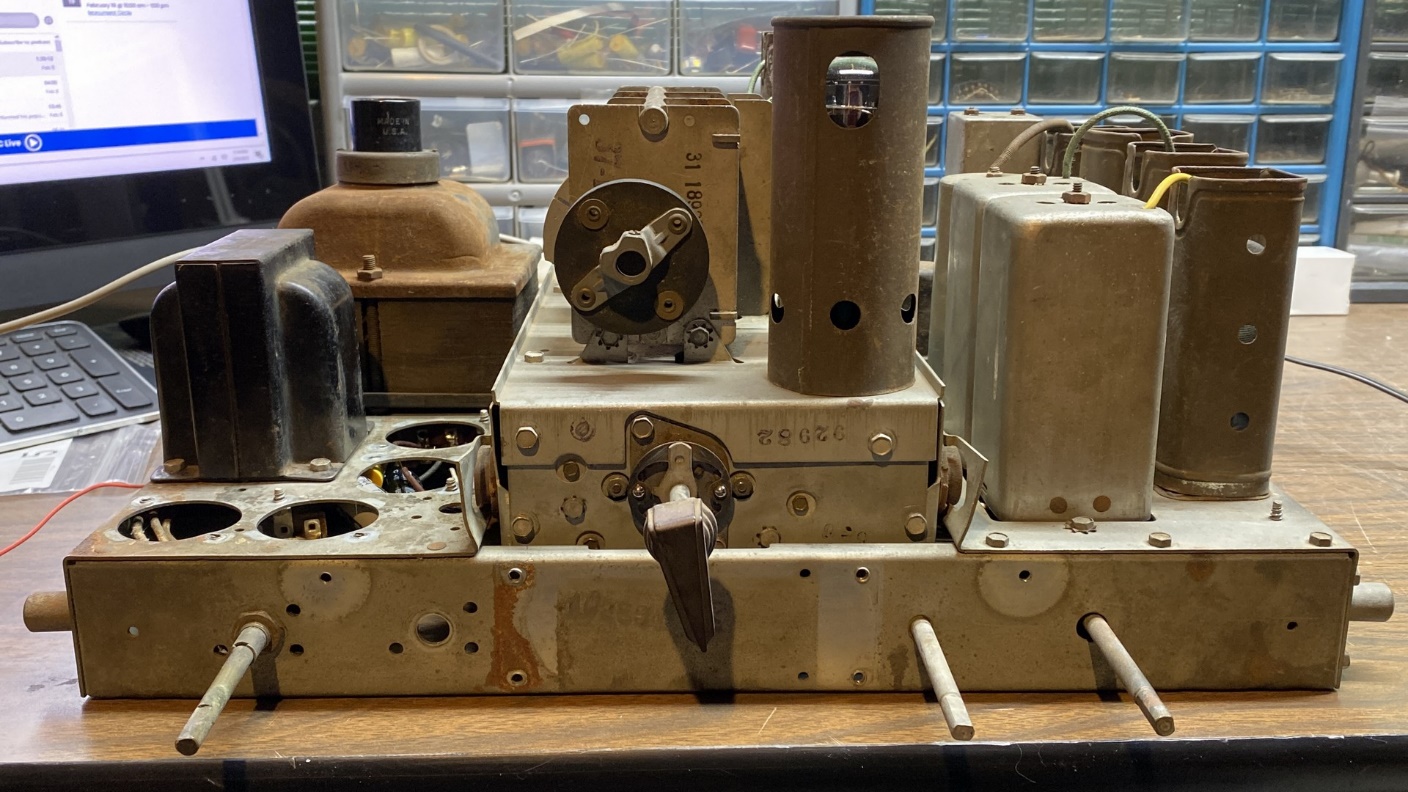
Having previously applied power to the 38-118 test jig chassis and seeing that nothing bad happened, my next move was to attempt to pass an IF signal through it.
I connected it to my Lepai amplifier and applied a 470 kc signal to the control grid of the 6K7G 1st IF tube. At first…I heard nothing. Then I remembered that I had the test jig’s volume control turned down to zero. DUH! Trying again, I still heard nothing. So I cranked the volume on the Lepai amp to maximum. Ah…now I could hear the 470 kc signal from my Siglent function generator.
For some strange reason, the audio signal was very weak, much weaker than I had expected it to be. Nevertheless, I went ahead and touched up the 2nd and 3rd IF transformers. The signal improved but was still extremely weak.
The 6K7 tubes arrived in the mail. I installed one in the 37-116 RF unit. Carefully applying power to the test jig once again…success! I was able to tune in the local Spanish station at 990 kc on the AM band. Switching to bands 2, 3 and 4, in succession, I could hear the expected RF noise although I tuned in nothing. It is hard to tune one of these when merely twirling the tuning condenser by hand; it needs its complete dial assembly for proper, slow tuning. In spite of that shortcoming, I changed to band 5 and actually tuned in a shortwave station in what was likely the 25 meter band.
The RF unit was working! Volume was still extremely weak, but this was not the fault of the RF unit – I likely made a wiring error within the test jig itself. I’m not worried about that right now. My main concern was making sure the RF unit worked.
It is not without its issues, though. Slight maladjustments of the band switch knob results in loss of signal, as if the contacts were still somewhat dirty. I think that possibly a better way to do this henceforth would be to clean the wafer sections in 99% isopropyl alcohiol as I did, let dry, then spray each wafer with QD Contact Cleaner (fast drying), going over the contacts with a toothbrush after spraying for good measure. By the time the next assembly is reassembled, everything would be quite dry and there should be no issues.
That is all for the time being. My next move will be to remove the RF unit from the 38-690 and do an autopsy on it to see if it does indeed have a carbon track in one of the wafer sections. The way the radio was behaving prior to its coming to visit me indicates that it does. Then, I hope to have enough spare parts to be able to rebuild that RF unit and try it again. The 1938 RF unit has fewer switch wafers so the rebuild should be easier.